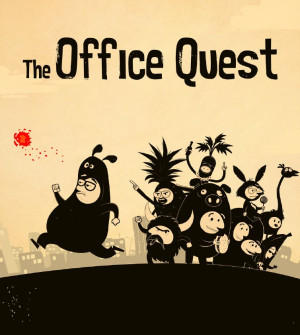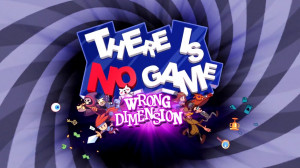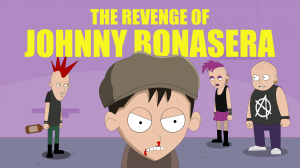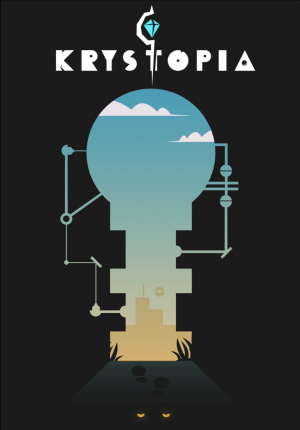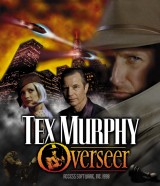Review for Transference

When Transference was first announced at E3 2017, I had no idea what to make of it. It just seemed to be this nebulous mystery project: too terrifying to wrap my mind around, too shrouded in secrecy to provide much information, so technologically advanced that I’d never experienced anything like it. Early marketing revolved around it being a one-of-a-kind experience built from the ground up for VR, so real that it blurred the fine line between movie and game. Lacking any tangible details, the way it finally settled in my memory was: “that game Elijah Wood is involved with.” As it turns out, Transference is indeed a creepy, atmospheric, well-acted mystery, even if it’s quite brief, doesn’t require VR, shows no sign of Wood on-screen, and perhaps isn’t as groundbreaking or revolutionary as it would have had me believe back then.
The whole adventure takes place within and immediately around an urban walk-up apartment block, or at least the virtual recreation of it, as its digital world drops away to a black void on the far side of the sidewalk surrounding the building. Though the game doesn’t overly concern itself with who you are or why you’re in this digital space, you soon make your way into the Hayes family’s flat, and it is here that the bulk of the story plays out. The family – consisting of husband Raymond, wife Katherine, and their young son Benjamin – is nowhere to be found, appearing only in sudden, unsettling visions or in video clips that play on TVs and computer screens as you pass by them.
Neither your identity nor your connection to the narrative is made clear; in fact, even the central conflict remains a large question mark all the way until the final credits roll. What is evident is that something happened to this family, their domestic happiness having decayed into bitterness over time. Letters and journal entries, audio messages, and said video clips can be pieced together to reveal a tale of a once-happy couple – he a talented scientist, she a promising musician – growing apart as his work began to consume his life and demand his undivided attention.
With his wife and son eventually leaving him, Raymond Hayes feverishly focused his attention on completing a machine that could store copies of his and his family’s consciousnesses, immortalized and bound forever to three crystals. The broken, lonely man’s goal was simply to allow a version of his family to live happily together forever, but something went awry. It’s unclear whether your ultimate goal of finding all three crystals is in order to reunite the family for eternity or to shut the project down completely, letting their tormented souls rest. The game lacks solid context to make this dilemma clear; maybe the idea was to let players interpret it as they saw fit, but as the central issue at stake, more certainty would have been welcome.
A theme running through Transference is the concept of perspective, of how events can be interpreted differently based on whose eyes they’re viewed through, with each of the three family members a case in point. For example, some of the game’s collectible video logs show the same memory – a birthday celebration in a park during which the parents, already at odds with each other or possibly even separated, try their best to get along for their son’s sake – shown from all three vantage points, each colored by the mindset of the person experiencing it, inflecting the same lines of dialog uniquely or remembering tiny details differently.
Of course, where this has the biggest influence on actual gameplay is in the multiple versions of the Hayes apartment: the one that realistically mirrors its real-world counterpart as well as three more seemingly stitched together from the feelings and recollections of the family members. The apartment’s layout is the same each time, but individual elements differ, like color scheme, walls adorned with messages and scribblings reflecting the memory’s owner, and whatever furnishings or events each room is best remembered for. In Katherine’s memory, for instance, the lighting is an emotional deep red and the walls portray her heartache and feelings of being trapped in a dead-end marriage, while Raymond’s memory is an analytical blue and sees every available surface frantically filled with scraps of scientific formulae.
It is necessary to traverse all iterations of the apartment space in order to access locked-off areas and solve the puzzles within them. Pressing a light switch anywhere in the apartment cycles through the available planes. This is where the game takes liberties with its spatial real estate; what was just a simple hall closet in one memory may lead to an interminable hallway in another; what appears as a happy master bedroom to the husband is a distressing place in the wife’s mind, adorned by a coffin in place of the marital bed and shuttered off by a heavy iron door.
Transference is as much about its free-roaming first-person exploration (via keyboard and mouse or gamepad – I was not able to try the VR version of the game) as it is about atmosphere, and objects can be picked up, examined, and rotated every which way and inspected before being set back down. A great many interactive items do nothing but provide flavor or a bit of environmental storytelling. While there is no actual inventory to store objects in, it’s possible to pick up a single item and manually carry it to a desired location, even bringing it with you across memory planes. A good example of this is the puzzle to access Ben’s room, which first requires finding letter magnets and taking them to his door one by one, where a word must be spelled out with them before the door will unlock.
There are also a number of times when the digital world is incomplete: an object that should be there is simply missing, and it is up to you to find it and restore it to its proper place in order to open a door or activate an object. Initially even entering the family’s apartment isn’t possible until you search the building’s dimly lit basement (a spooky proposition in and of itself) to find and restore the missing doorknocker. Although these puzzles look a little different, giving you a glance behind the virtual curtain by replacing the missing object with the file name assigned to it by the simulation, they don’t go beyond the “find, place” mechanic to solve. Some more traditional puzzles also appear, such as having to recreate a sound sequence to gain entry into the building proper, and fine-tuning a couple of radio dials to receive a specific frequency.
The level of challenge is fairly low, but Transference isn’t meant to be a lengthy adventure, requiring only around an hour or two to complete. Its focus isn’t so much on puzzles as it is on creating an unsettling atmosphere, which it accomplishes via visions of the family, their static-scrambled apparitions begging you to help them, their disembodied voices drifting through the apartment, as well as more concrete scares like doors abruptly rattling in their frames, sudden loud noises, or a digitized recreation of the family’s large dog appearing out of nowhere and leaping at you unexpectedly. There’s even a dark, red-eyed shape that appears several times, seemingly stalking you, but there’s never any actual threat, nothing that can harm or kill you or slow your progress. It’s creepy at times, sure, but in the end it’s all bark and no bite.
The game world is heavily anchored in realism, with everything from a photorealistic art style to actual actors used in the FMV sequences, though the protagonist is never seen or heard. All three members of the Hayes family are brought to life convincingly by their performers, and the story of a family on the rocks is emotionally involving, even if more time devoted to fleshing it out would have added greater impact. The music is largely understated background ambiance but ramps up to make your pulse race for creepy moments and jump scares.
It’s a pity Transference isn’t a little longer, as its brevity does it no favors when it comes to grounding the early narrative. Only a bit of time is spent segueing from the spooky overtones of entering a large deserted apartment building to delving into the singular domestic drama waiting within. Nothing against uncovering a backstory organically during gameplay, but when the runtime is this short, every minute counts, and having to first find your bearings within the plot means valuable time is lost. I’d have appreciated becoming a bit more involved with Raymond’s scientific research and experimenting, Katherine’s struggles with her marriage, and Ben’s turmoil in dealing with it all while powerless to stop it. More time could have also been spent on providing some tangible player motivation, since I usually had a clear idea what I was supposed to be doing, but unsure exactly what my overarching goal was or how my presence and actions were even helpful at all.
Transference is certainly not the watershed experience it was touted as, but what it sets out to do it does well, without ever overstaying its welcome. High production values and a ton of atmosphere help to present a disquieting story, while the straightforward gameplay and light challenge keep it moving at a fast clip that begs to be completed in a single sitting. Home truly is where the heart is, and whether in VR or not, attempting to help the beleaguered Hayes family is well worth facing down the few frights that pop up along the way.










